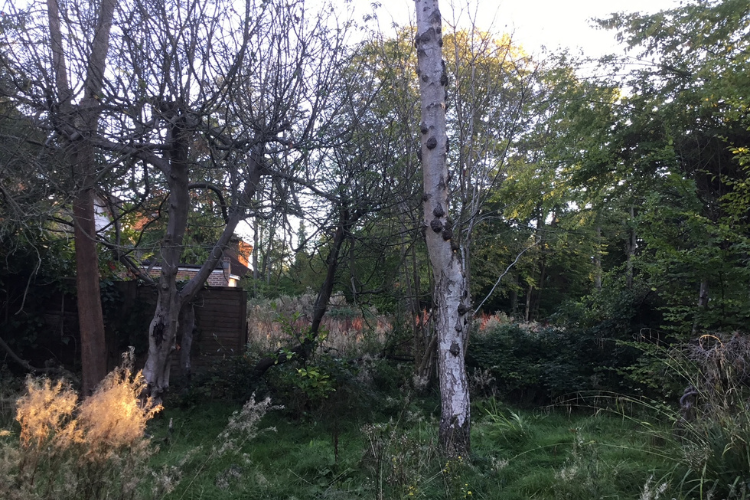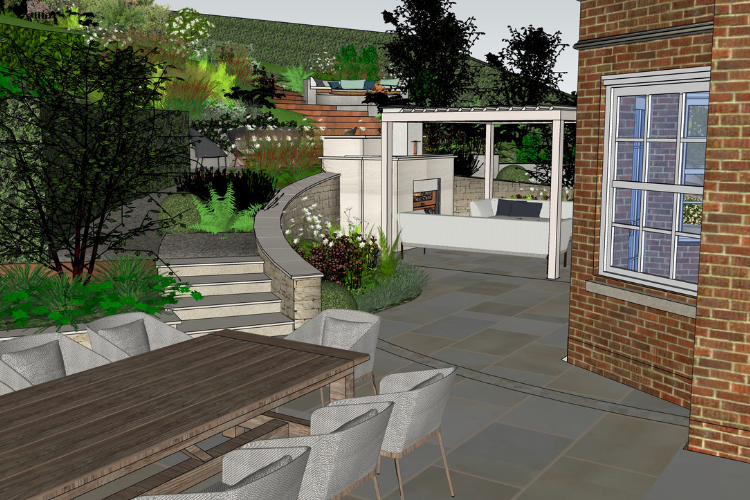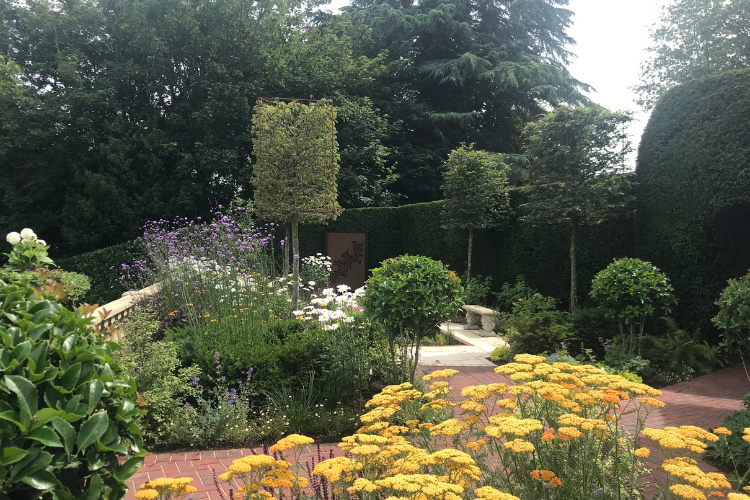Biggest challenges in landscaping a garden
Dealing with slopes, neighbours and costs!

Co-Founder
Vicki Davis
Creating a fabulous garden is something many of us aspire to, but there can be many challenges in landscaping a garden, that stop many people even getting started. Here, award-winning garden designer Vicki Davis of CGLA discusses the most common challenges in landscaping a garden and how to break through to the garden of your dreams!

As I embarked on my journey into the world of landscaping, I quickly realized that transforming a patch of earth into a stunning outdoor oasis was no walk in the park. The challenges of landscaping a garden are many from managing complex levels and scary budgets, to ensuring that the finished article actually does look and feel like the design. In this article, I’ll share my experiences and insights on how to navigate and conquer the common hurdles that come your way when delving into landscaping.
Understanding your terrain
You can’t begin to overcome obstacles without a good, detailed understanding of what they are in the context of your site, so I always do the following:
- Survey the site with a fresh eye. Each outdoor space is unique, and comprehending the topography and site context is crucial. Consider a professional measured survey and have a good mooch into the hidden corners of the space to unearth its secrets. Mark out good (and bad) parts of the garden as it is currently arranged. Even if it is your own garden this is a really good discipline, and fighting through the undergrowth and seeing the garden drawn up to scale can be very surprising, particularly if it is currently very overgrown!

- Ideally model in 3D. Most of us think in 3D so trying to make decisions without this view is really hard. In my view it is essential for steeper sites and new builds- there is nothing like seeing the scale of retaining walls, the number of required steps, or the view from your new kitchen sink to make you think twice about a design!

- Where are you going to want to sit? Plot the sun’s movement throughout the day, noting possible seating spots (particularly morning and evening). Sun and shade lovers may make different choices on this, and both options can be good. Think also about proximity to kitchen/views/noisy roads or neighbours too.
Armed with this knowledge, and a list of client requirements and concerns, I find I can then start to strategically arrange the space, levels and features to ensure optimal functionality as well as getting the aesthetics right.
Obstacle 1- Level lawns on sloping plots
Levelling can almost always be done, but it can be pricey particularly on steeper slopes or where access is tight. Getting larger machinery in makes a big difference here so plan to do the work when access is at its best (with new build houses this usually means before the house goes up!).
You will need retaining structures (either banks or walls) and probably soil import and/or export. You may need balustrade to the walls and may need a structural engineer on board so this can be a major undertaking and worth planning well!
You will be restricted if there are protected trees on the site as you will not be allowed to change the levels around their root zones.
This all means that you are not alone if you feel this is a big obstacle-but it just needs planning. Making it work well is all in the design. There are plenty of options to reduce, create, clad, use or hide retaining structures, and getting the basic geometry right in the first place is half the battle.
Obstacle 2- Neighbourly (and not so neighbourly) interactions
Hedge wars, boundary disputes and fights over noise and access are surprisingly common and can be a major obstacle to getting landscaping done. Having a carefully considered plan to share makes most neighbours much more reasonable, and knowing what is going to happen when can help. We find that having an expert third party around can make complaints seem less reasonable (if of course they are!) and having a professional Project Manager to direct complaints to can be a real weight off a homeowner.
There are specific regulations on hedges, shared boundaries and taking light from neighbours that can be pointed out alongside a reasonable remediation plan. When something is important to you it is often worth offering a small token rather than fighting about the legalities, and we often find that offering to plant a new tree or pay for hedge-trimming or fence-repair can work wonders.
Obstacle 3- My partner and I don’t agree!
Probably a third of the couples we meet have a significant area of disagreement as to the overall style they want for their landscaping (usually politely expressed but not always!). This then bleeds into choices for everything else since there has not been resolution as to the overall ‘feel’ of the space.
The most common area of disagreement is “I want a magical garden with lots of colour and enchanting discoveries and my partner likes bleak neatness and order”.
Good garden design is about finding the areas of overlap in your tastes rather than forcing compromise, and there are design techniques that can in 99% of cases produce a design to satisfy both sets of tastes! In larger gardens you can arrange separate spaces for different interests (vegetables, man-cave, potting shed, wild garden etc) but these still need to fit within the context of a design you both love.
Obstacle 3- Can I afford it? – Plan, cost, change, repeat!
Breathtaking landscaping doesn’t require a bottomless budget, but it is often a significant investment. Experienced designers will help you at the start with some broad-brush cost ranges, but these will be very broad indeed until the design is crystallised on paper. Most designs need an iterative approach to get to the right combination of scope and budget for you.
This is why I recommend that you design to hit your brief first, cost that, and then expect to ‘value engineer’, and redesign and re-cost if needed. This approach allows you to explore the art of the possible, not reining yourselves in too much at the start, whilst recognising that you will want to see what your chosen design costs before scaling back.
Obstacle 4- Keeping your lovely, finished garden in great shape
Many people feel daunted by the upkeep of a finished garden, and quite rightly in some cases- it can be a major time and cost sink.
Much of this can be alleviated by good design- getting the right plants for the location, investing in low impact irrigation and/or water conservation techniques, proper drainage, and good materials. However, no garden is zero maintenance, anything that grows will need a bit of attention at times, and seasonal leaf fall and die back will always result in some mess to clear up! Depending on your site and aspirations, getting a gardener to help with some aspects may be a good option, and you may wish to budget for this as part of your plans.

Can I do all this?
Starting a landscaping project can feel very daunting, planning, budgets and arguments about priorities loom large in people’s minds and these can stop you even getting started.
In my experience all of this can be resolved with good up-front planning, and you can make your dreams a reality. The trick here is to:
- Make sure that you know exactly what you are going to do before you start- sort out the known obstacles beforehand, and if needs be, change plans.
- Allocate the time and budget to it that you are happy with and be ready to go- expecting to sort things out along the way can be very stressful.
- Start by being aspirational- reality and compromise can come in later, but you won’t know if you don’t explore your dreams.
Great up-front design and planning will ensure that you spot and overcome obstacles and get the haven that you aspire to at the end of it all.
If you are ready to start your landscaping journey, or if you need advice on a particular problem, feel free to contact us
